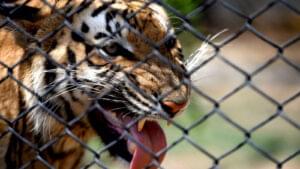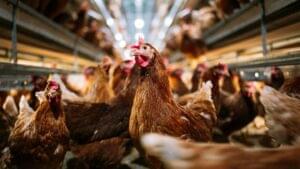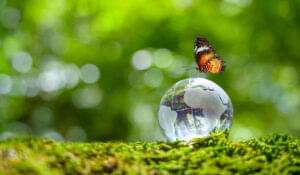Animals play a significant role in the efficient operation of our world. Animals are vital to the stability of human lives, the environment, and the ecosystem. They make great friends, especially the little mammals. It is impossible to overstate the value of animals. Our existence would not be feasible without them.
Animals’ importance to the environment and ecosystem
What maintains the ecosystem’s balance is the cycle of predators and prey. Herbivores like goats are preyed upon by carnivores like wolves and hyenas.
Grass and other vegetation are what the herbivores eat. These animals then release carbon dioxide, which the plants require to thrive and create oxygen. These creatures’ bodies decay into the soil (by microbes) after they pass away, giving plants nutrition. The animals maintain the cycle’s stability in this way.
The sticky pollen grains on the blooms are also collected by bees when they collect nectar from flowers. The pollen grains separate and gather on the flower when they sit on another flower to acquire more nectar. In this manner, pollination occurs and new plants are created. They then create oxygen, the vital gas that is the basis of all life.
Animals’ Purpose in Wellness
The keeping of animals as pets is one of the most popular uses for them. Fish, birds, insects, huge mammals like monkeys, and even fish are among the animals humans keep as pets. Cats and dogs are the most popular pets, thus it seems sense that they have also undergone the most anthropomorphization of any mammal. Also, interactions between people and animals are beneficial to both parties’ health in many ways.
Animals Are Important for Our Physical Health
According to a study by many academics, people who own pets experience lower heart rates and blood pressure under stressful situations than people who do not. In this study, stressful events were presented to two groups of people: pet owners and non-pet owners. Then, their response of the cardiovascular system was noted. The findings also indicate that owning a pet can greatly lower the risk of cardiovascular illnesses and speed up recovery.
Also, according to health.harvard.edu, having a dog as a companion helps lessen a person’s stress level and cholesterol and triglyceride levels. Also, there is evidence that pet ownership can considerably aid older people and youngsters with anxiety and mental health issues.
Animals for Rehabilitation and Recovery
The best caregivers and aid in a speedy recovery from a serious illness might come from domesticated animals. They can support our continued physical recovery as well as speech and occupational treatment. According to the Mayo Clinic, patients who undergo dental procedures, cancer treatment, cardiovascular disorders, dementia, post-traumatic stress disorder, and anxiety can benefit from animal-assisted therapy to reduce discomfort and recover more quickly.
Animals also enable convicts to live peaceful lives outside of prison. The finest caregivers for people with some disabilities may be trained animals. Dogs and monkeys, for instance, can help their blind or paralyzed owners with daily activities. Cats can also alert their hearing-impaired partners to certain sounds.
The Companions We Keep: Animals
According to several studies, having an animal companion might aid in stress relief and relaxation. Also, owning a pet has a significant social impact on daily living. Keeping an animal as a pet only works towards the beneficial impacts of friendship and other social interactions, which have both positive and bad effects. Individuals who own pets experience less loneliness and discover a wonderful companion with whom to spend time. Also, dogs are fantastic for enhancing physical fitness. This is so you can play with them or go for a stroll with them. Also, some research suggests that keeping a pet as a companion helps enhance social relationships.
Animals’ Role in Safety and Security
Police forces frequently deploy dogs for tracking and substance detection. Horses are often used by the police industry for road clearing and patrols. For crowd control at sporting events like rugby and football games, they are flexible. Marine personnel are assisted with dolphins known as military dolphins in the search for underwater explosives and the recovery of drowning swimmers.
In some regions, cats aid sufferers in calming down during stressful times. Eagles and pigeons are just two examples of the birds that have been trained to carry out a specific task for the police. In addition, people keep dogs in their homes to deter robbers and guard against shady activities.
Animals’ Place in Food Security
Our worldwide population is projected to grow by up to 32% by 2050 and by 53% by 2100, according to a conservation initiative. As a result, it is incredibly difficult to maintain food security and feed such a big population. And for that reason, there is a high demand for animal goods like milk, eggs, meat, and seafood to satiate appetite.
Moreover, animal products (sometimes known as “livestock”) have great nutritional quality. They are an excellent source of proteins that are well-balanced and bioavailable as well as a number of minerals, including as zinc, iron, vitamin A, and B-12. So, eating foods originating from animals is a crucial part of our diet’s nutrition. In young children, a lack of these nutrients results in anemia, stunted growth, and rickets.
Besides from mammals, fish like herring, cod, and tuna are also widely caught—or raised in fisheries. They make a fantastic diet, and fish is typically the main source of protein for most individuals. Other marine animals like octopuses and squids are also eaten in several regions of the world. Animals are therefore crucial to our eating habits.
Animals for Sustainable Agriculture
In addition to providing high-quality and demanding food, farm animals have specific responsibilities in the sustainability of agriculture. For instance, manure is a crucial agricultural byproduct that improves soil fertility for the growth of high-quality crops. Also, this is a crucial source of energy for various power plants.
Moreover, grazing farm animals including sheep, goats, cattle, and buffalo significantly contribute to increasing the biodiversity of agricultural land. For transforming grasslands into high-quality products, this is crucial.
The value of animals in science and medicine
Since ancient times, animals have been employed to treat ailments, but it wasn’t until 1798 that they were recognized as the best test subjects. Because of the vaccinations made from animal cells expanded through in vitro fertilization, polio was eradicated. The measles vaccine was created in a similar manner. The most commonly utilized experimental models among all animals are mice and rats. Few of them are genetically changed just for experiments, and they are employed specifically for genetics. Such a mouse is known as a “knockout mouse.”
Animals like chickens and fruit flies are used to test new medications on them. They are applied repeatedly until the medication is accepted as safe for use by people. Since that their venom possesses anticoagulant effects, even snakes are important in the medical sector (it prevents the formation of clots). Patients with heart, lung, and blood-related illnesses can be treated with the venom. Ecteinascidia turbinata, a specific sea species, is the source of the medicine used to cure cancer. Painkillers are made from a lethal toxin generated by the snail Conus geographus.
Animal Usage and Economic Importance
Even the hunter-gatherer ancestors of modern people utilized animal skin to make lashings. We make handbags, shoes, and other products using the skin of cattle, pigs, and a few rare species. The skin of the big cats, including tigers, leopards, cheetahs, lions, panthers, and cougars, is necessary for making rugs and carpets. They are believed to be the warmest type of clothing of all and are also used to manufacture coats, but they are also pricey.
Insect corpses are also used to make certain colors. Sea snails were employed to create the hue purple for regal apparel, according to Aristotle’s writings. In addition to using colors, lambs and goats are sheared for their wool. A fascinating fact about sheep is that they will eventually die from the immense weight of their fleece if it is allowed to accumulate. Sheep are crucial to the production of our woolen garments.
Animals’ Function in Fun and Entertainment
Another important source of amusement is animals. Every year, animals in zoos and circuses draw in millions of visitors and generate a sizable amount of revenue for businesses. To increase viewership, cats and dogs are frequently portrayed in movies and television shows. There is at least one native animal in every nation, and people travel from all over the world to see them, bringing in extra revenue. Another setting where animals coexist peacefully and in harmony while earning money for their owners is a safari.
Sports and Animals
Specific animal uses for entertainment and sports exist. Horses make the greatest partners in a number of popular sports, including polo, rodeos, and horse racing.
In some activities, such racing, fighting, or hunting, dogs, cocks, calves, bulls, and steers are also used. Some of these acts, nevertheless, are already prohibited because of the psychological harm they cause to our beloved partners.
Conclusion
Without animals, we wouldn’t be able to survive on this planet, which is why they are so important to us. According to the anthropological timeline, humans are a relatively recent species. Before that, there have been animals for millions of years.




